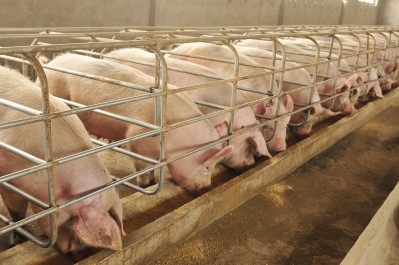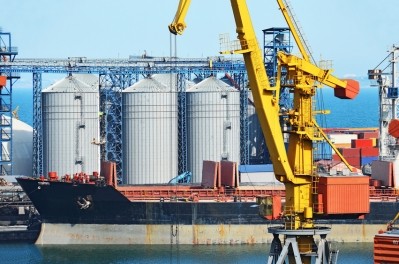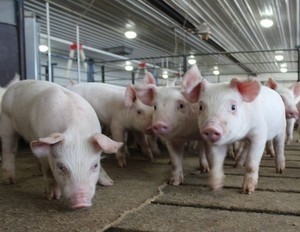Irish compounders told to lower pig feed prices

The chair of the IFA’s National Pigs and Pigmeat Committee, Pat O’ Flaherty, has called on pig compound feed millers to drop feed prices, with immediate effect.
Citing recent data from Teagasc, the Irish national research body, which provides monthly compound and home milled feed price updates, he said it is obvious feed prices should be lowered.
“According to the Teagasc figures, a ton of compound feed could be milled (ex-port) for €222 per ton in September, while farmers are being forced to pay up to €270 per ton for an equivalent compound ration.
“Even when transport costs are factored in, the gap is enormous and completely unjustified.
“A saving of €50 per ton would make a massive difference to a pig farmer’s bank balance,” said O’Flaherty.
He said pig producers in Ireland are still behind their EU counterparts in terms of pig prices.
“But we are always more expensive in terms of feed prices which hampers our competitiveness,” added the pig market specialist.
He said the IFA has requested meetings with all the pig feed millers as decreases in feed prices are “long overdue”.
A pig feed cost and price monitor report, released last month by Teagasc, can be read here.
Reacting to the IFA complaint, a spokesperson for the Irish Grain and Feed Association (IGFA) told us it did not comment on commercial issues such as pricing.
Cost reduction initiatives
An Irish pig industry development strategy document published by Teagasc this time last year showed the feed cost per kg dead weight is €0.19c higher in Ireland than the average for the main EU pig producing countries such as Denmark, The Netherlands, France and Germany.
The report outlined plans to improve sector profitability including a focus on herd performance analysis and benchmarking as well as dissemination of research findings in order to reduce costs, especially feed.
“Other factors associated with this cost gap include feed credit, slaughter weights, differences in feed formulation, diet specifications used and efficiency of feed utilization. Why do we feed higher specification diets, sometimes over longer periods than some of our EU competitors? Efficiency of feed utilization, feed formulation and diet specifications are areas that we have more control over and should be targeted to help reduce costs,” noted the authors.
It said research into nutrition and management strategies was required to further improve feed efficiency and growth rates including the investigation of current feeding strategies, use of the net energy (NE) system for diet formulation, use of less expensive diets, alternative ingredients, and a review of slaughter weights.
Doing so, argued the authors, could support a €0.6 cent reduction in feed costs per kg dead weight.
“More than 70% of the feed cost is incurred in the finisher period so research directed towards improving feed efficiency and reducing costs during this period is crucial. Additionally, previous research has shown that nutrition of sows and early in the pig’s life can have a huge impact on lifetime growth, feed efficiency and carcass quality. Therefore it is important that nutritional research is also conducted while the pig is in-utero and in the early weeks of life,” found the authors.
The report also noted advances in the genetics of the Irish sow herd are largely responsible for the dramatic increases in numbers of piglets born alive in the last 10 years. “However, there has been a concomitant increase in the number of small and weak piglets produced. These problems culminate in piglets dying at a younger age, or reaching finishing weight at a slower rate,” noted the publication.








